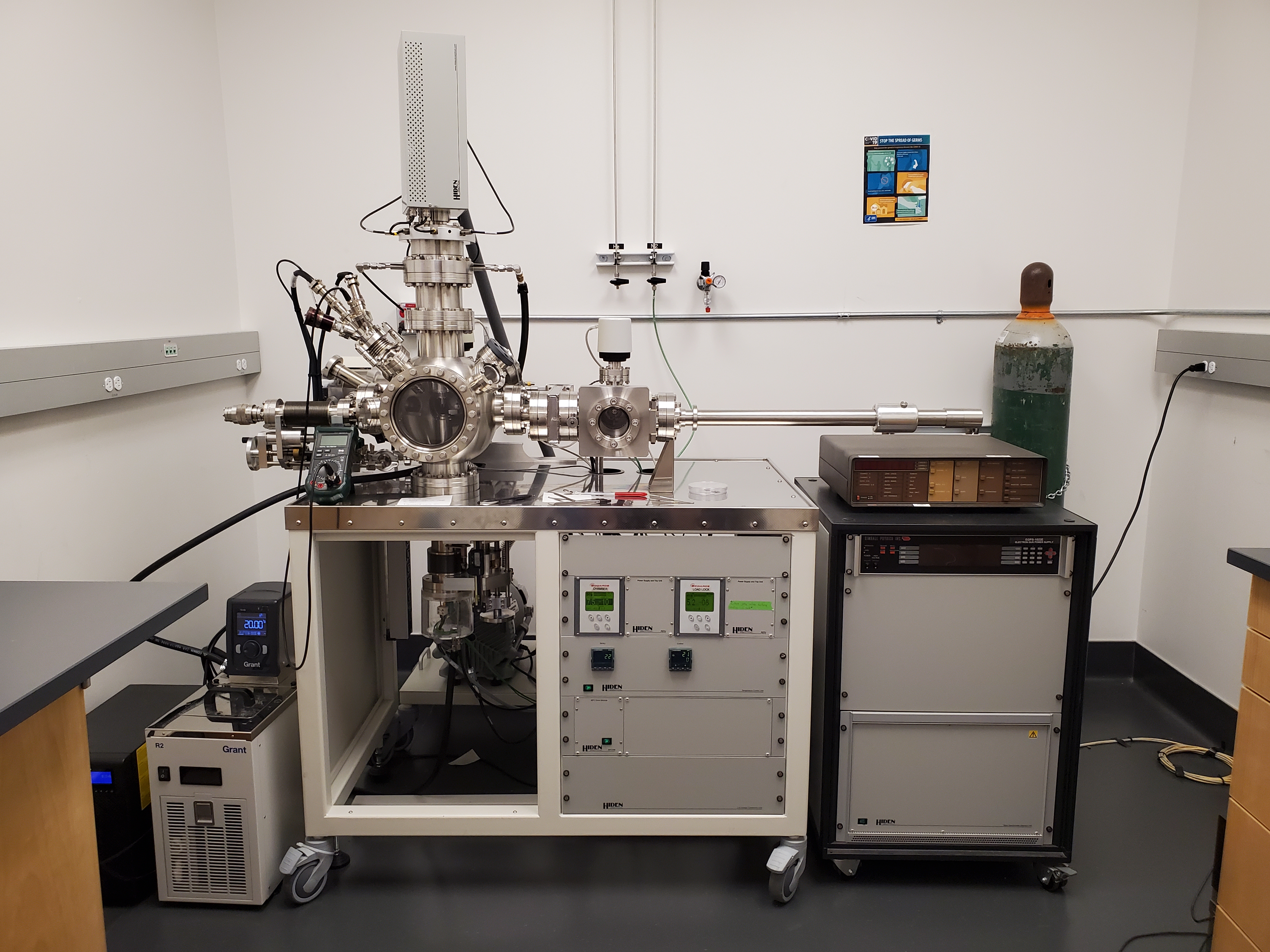
Temperature programmed desorption (TPD) is a powerful tool to study the temperature desorption of molecules from a surface by heating the sample in a linear ramp rate. This technique is used to measure the thermal stability of a material, enabling the study of adsorbate and material decomposition and desorption, adsorption kinetics, surface coverage, and adsorption energies.
The Hiden TPD workstation located at Johnson Hall is a complete experimental system for analysis of thermal desorption products by ultrahigh vacuum (UHV) TPD/TDS. The TPD Workstation features a multiport UHV chamber (<5x10-9 Torr) with heated sample stage to 1000 °C. Temperature control is achieved by PID coupled to a high precision triple filter quadrupole mass spectrometer with digital pulse ion counting detector for ultimate sensitivity and time resolution.
TPD Capabilities:
When publishing research involving experiments conducted at the APSCL, please include the following text in the acknowledgements: “Part of this research was conducted at the Northwest Nanotechnology Infrastructure, a National Nanotechnology Coordinated Infrastructure site at Oregon State University which is supported in part by the National Science Foundation (grant NNCI-2025489) and Oregon State University.”